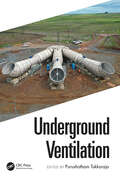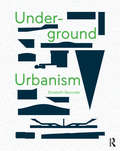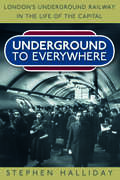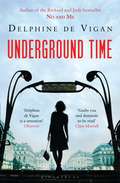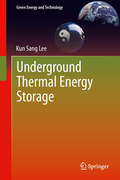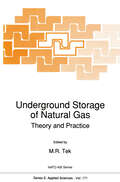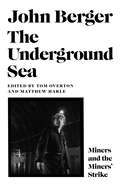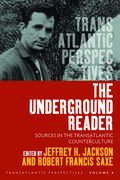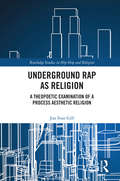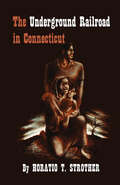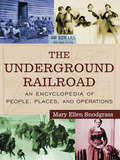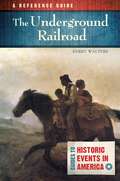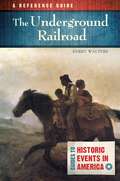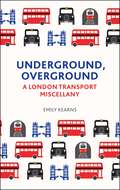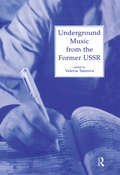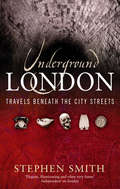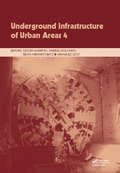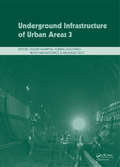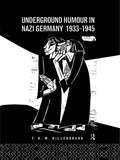- Table View
- List View
Underground Ventilation: Proceedings of the 19th North American Mine Ventilation Symposium ((NAMVS 2023, 17-22 June 2023, Rapid City, South Dakota, USA)
Underground Ventilation contains the proceedings of the 19th North American Mine Ventilation Symposium held at the South Dakota School of Mines & Technology (South Dakota Mines) in Rapid City, South Dakota, June 17-22, 2023. South Dakota Mines organized this symposium in collaboration with the Underground Ventilation Committee (UVC) of the Society for Mining, Metallurgy & Exploration (SME). The Mine Ventilation Symposium series has always been a premier forum for ventilation experts, practitioners, educators, students, regulators, and suppliers from around the world to exchange knowledge, ideas, and opinions. Underground Ventilation features sixty-seven selected technical papers in a wide range of ventilation topics including: auxiliary and primary systems, mine fans, case studies, computational fluid dynamics applications, diesel particulate control, electric machinery, mine cooling and refrigeration, mine dust monitoring and control, mine fires and explosion prevention, mine gases, mine heat, mine ventilation and automation, occupational health and safety, renewable/alternative energy, monitoring and measurement, network analysis and optimization, and planning and design.
Underground Urbanism
by Elizabeth ReynoldsHave you ever wondered what lies beneath the streets of your city? Do you picture, in isolation, a series of train tunnels and pipes? Or perhaps the foundations of tall buildings that lie scattered, like icebergs, beneath the surface? As our cities grow up, out, and down, it is time we better understood how the different layers of these complex urban environments relate to one another. Underground Urbanism seeks to provide a new perspective on our cities, and consider how this might be used to engage more positively with them. So, tip your cities upside down to have a closer look, and let us rethink them from (below) the ground, up.
Underground Urbanism
by Elizabeth ReynoldsHave you ever wondered what lies beneath the streets of your city? Do you picture, in isolation, a series of train tunnels and pipes? Or perhaps the foundations of tall buildings that lie scattered, like icebergs, beneath the surface? As our cities grow up, out, and down, it is time we better understood how the different layers of these complex urban environments relate to one another. Underground Urbanism seeks to provide a new perspective on our cities, and consider how this might be used to engage more positively with them. So, tip your cities upside down to have a closer look, and let us rethink them from (below) the ground, up.
Underground to Everywhere: London's Underground Railway in the Life of the Capital
by Stephen HallidayLondon's Underground is one of the best-known and most distinctive aspects of the city. Since Victorian times, this remarkable feat of engineering has made an extraordinary contribution to the economy of the capital and played a vital role in the daily life of generations of Londoners. Stephen Halliday’s informative, entertaining, wide-ranging history of the Underground celebrates the vision and determination of the Victorian Pioneers who conceived this revolutionary transport system. His book records the scandal, disappointments, and disasters that have punctuated the story and the careers of the gifted, dedicated, sometimes corrupt individuals that have shaped its history. It also gives a fascinating insight into the neglected, often unseen aspects of this subterranean system - the dense network of tunnels, shafts and chambers that have been created beneath the city streets.
Underground Time
by Delphine De ViganEveryday Mathilde takes the Metro, then the commuter train to the office of a large multi-national where she works in the marketing department. Every day, the same routine, the same trains. But something happened a while ago - she dared to voice a different opinion from her moody boss, Jacques. Bit by bit she finds herself frozen out of everything, with no work to do. Thibault is a paramedic. Every day he drives to the addresses he receives from his controller. The city spares him no grief: traffic jams, elusive parking spaces, delivery trucks blocking his route. He is well aware that he may be the only human being many of the people he visits will see for the entire day and is well acquainted with the symptomatic illnesses, the major disasters, the hustle and bustle and, of course, the immense, pervading loneliness of the city.Before one day in May, Mathilde and Thibault had never met. They were just two anonymous figures in a crowd, pushed and shoved and pressured continuously by the loveless, urban world.Underground Time is a novel of quiet violence - the violence of office-bullying, the violence of the brutality of the city - in which our two characters move towards an inevitable meeting. 'Two solitary existences cross paths in this poignant chronicle, a new testimony to de Vigan's superb eloquence' Lire
Underground Thermal Energy Storage (Green Energy and Technology)
by Kun Sang LeeUnderground thermal energy storage (UTES) provide us with a flexible tool to combat global warming through conserving energy while utilizing natural renewable energy resources. Primarily, they act as a buffer to balance fluctuations in supply and demand of low temperature thermal energy. Underground Thermal Energy Storage provides an comprehensive introduction to the extensively-used energy storage method. Underground Thermal Energy Storage gives a general overview of UTES from basic concepts and classifications to operation regimes. As well as discussing general procedures for design and construction, thermo-hydro geological modeling of UTES systems is explained. Finally, current real life data and statistics are include to summarize major global developments in UTES over the past decades. The concise style and thorough coverage makes Underground Thermal Energy Storage a solid introduction for students, engineers and geologists alike.
Underground Storage of Natural Gas: Theory and Practice (NATO Science Series E: #171)
by M.R. TekThis book contains the proceedings of NATO Advanced Study Institute, 'Underground Storage of Natural Gas - Theory and Practice', which was held at The Middle East Technical University, Ankara, Turkey during 2-10 May 1988. Underground storage is the process which effectively balances a variable demand market with a desirably constant supply provided by pipelines. Storage reservoirs are the unique warehouses designed and developed to provide a ready supply of natural gas in response to high, peak demands during cold weather. The natural' gas is injected into the underground storage environment when the market demand falls below the supply available from the pipeline. It is withdrawn from the storage reservoir to supplement the steady supply provided by the pipelines whenever the demand exceeds the supply. The overall wellbeing of the entire western world in general and of the NATO member count ries in particular depend critically upon having sufficient energy resources. Of over 80 quad Btus of energy consumed each year in the western world, about 30~ comes from natural gas, a figure only exceeded by oil. The technology related to supply and demand of natural gas has been in the focus of long range energy planning during the last decade in Western Europe. In view of recent developments related to natural gas in Europe and Turkey, an "Advanced Study Institute" programme in Turkey on underground storage of natural gas was deemed particularly relevant and timely.
The Underground Sea
by John BergerThe Underground Sea is a succinct, urgent collection of writing from John Berger’s archive. It brings together for the first time his work on mineworkers and the miners’ strikes and has been edited as a set of actions for today. Publication of The Underground Sea marks the 40th Anniversary of the 1984-5 Strike, at a time when people are rediscovering the necessity, power and possibilities of collective action. Including transcripts and image-essay of his rarely-seen BBC programme, Germinal; interviews and his essay ‘Miners’, it places itself in the heart of a Derbyshire mining village, with reflections on the everyday life of a typical pit community. Berger grapples with the politics of witness as he studies the miners’ labour and the wider community shaped in service to this work. Reflecting on their precarity, he goes back to Zola’s novel for hope that ‘a new world is germinating underneath the ground. And when it arrives, it will crack open the earth.’
The Underground Reader: Sources in the Trans-Atlantic Counterculture (Transatlantic Perspectives #4)
by Jeffrey H. Jackson Robert Francis SaxeEvery society has rebels, outlaws, troublemakers, and deviants. This collection of primary sources takes readers on a journey through the intellectual and cultural history of the “underground” in the nineteenth and twentieth centuries. It demonstrates how thinkers in the US and Europe have engaged in an ongoing trans-Atlantic dialogue, inspiring one another to challenge the norms of Western society. Through ideas, artistic expression, and cultural practices, these thinkers radically defied the societies of which they were part. The readings chart the historical evolution of challenges to mainstream values -- some of which have themselves become mainstream -- from the beginning of the nineteenth century to the present.
Underground Rap as Religion: A Theopoetic Examination of a Process Aesthetic Religion (Routledge Studies in Hip Hop and Religion)
by Jon Ivan GillUnderground rap is largely a subversive, grassroots, and revolutionary movement in underground hip-hop, tending to privilege creative freedom as well as progressive and liberating thoughts and actions. This book contends that many practitioners of underground rap have absorbed religious traditions and ideas, and implement, critique, or abandon them in their writings. This in turn creates processural mutations of God that coincide with and speak to the particular context from which they originate.Utilising the work of scholars like Monica Miller and Alfred North Whitehead, Gill uses a secular religious methodology to put forward an aesthetic philosophy of religion for the rap portion of underground hip-hop. Drawing from Whiteheadian process thought, a theopoetic argument is made. Namely, that it is not simply the case that is God the "poet of the world", but rather rap can, in fact, be the poet (creator) of its own form of quasi-religion.This is a unique look at the religious workings and implications of underground rap and hip hop. As such, it will be of keen interest to scholars of Religious Studies, Hip-Hop Studies and Process Philosophy and Theology.
Underground Rap as Religion: A Theopoetic Examination of a Process Aesthetic Religion (Routledge Studies in Hip Hop and Religion)
by Jon Ivan GillUnderground rap is largely a subversive, grassroots, and revolutionary movement in underground hip-hop, tending to privilege creative freedom as well as progressive and liberating thoughts and actions. This book contends that many practitioners of underground rap have absorbed religious traditions and ideas, and implement, critique, or abandon them in their writings. This in turn creates processural mutations of God that coincide with and speak to the particular context from which they originate.Utilising the work of scholars like Monica Miller and Alfred North Whitehead, Gill uses a secular religious methodology to put forward an aesthetic philosophy of religion for the rap portion of underground hip-hop. Drawing from Whiteheadian process thought, a theopoetic argument is made. Namely, that it is not simply the case that is God the "poet of the world", but rather rap can, in fact, be the poet (creator) of its own form of quasi-religion.This is a unique look at the religious workings and implications of underground rap and hip hop. As such, it will be of keen interest to scholars of Religious Studies, Hip-Hop Studies and Process Philosophy and Theology.
The Underground Railroad in Connecticut
by Horatio T. StrotherHere are the engrossing facts about one of the least-known movements in Connecticut's history—the rise, organization, and operations of the Underground Railroad, over which fugitive slaves from the South found their way to freedom. Drawing his data from published sources and, perhaps more importantly, from the still-existing oral tradition of descendants of Underground agents, Horatio Strother tells the detailed story in this book, originally published in 1962. He traces the routes from entry points such as New Haven harbor and the New York state line, through important crossroads like Brooklyn and Farmington. Revealing the dangers fugitives faced, the author also identifies the high-minded lawbreakers who operated the system—farmers and merchants, local officials and judges, at least one United States Senator, and many dedicated ministers of the Gospel. These narratives are set against the larger background of the development of slavery and abolitionism in America— conversations still relevant today.
The Underground Railroad: An Encyclopedia of People, Places, and Operations
by Mary Ellen SnodgrassThe culmination of years of research in dozens of archives and libraries, this fascinating encyclopedia provides an unprecedented look at the network known as the Underground Railroad - that mysterious "system" of individuals and organizations that helped slaves escape the American South to freedom during the years before the Civil War. In operation as early as the 1500s and reaching its peak with the abolitionist movement of the antebellum period, the Underground Railroad saved countless lives and helped alter the course of American history. This is the most complete reference on the Underground Railroad ever published. It includes full coverage of the Railroad in both the United States and Canada, which was the ultimate destination of many of the escaping slaves. "The Underground Railroad: An Encyclopedia of People, Places, and Operations" explores the people, places, writings, laws, and organizations that made this network possible. More than 1,500 entries detail the families and personalities involved in the operation, and sidebars extract primary source materials for longer entries. This encyclopedia features extensive supporting materials, including maps with actual Underground Railroad escape routes, photos, a chronology, genealogies of those involved in the operation, a listing of Underground Railroad operatives by state or Canadian province, a "passenger" list of escaping slaves, and primary and secondary source bibliographies.
The Underground Railroad: An Encyclopedia of People, Places, and Operations
by Mary Ellen SnodgrassThe culmination of years of research in dozens of archives and libraries, this fascinating encyclopedia provides an unprecedented look at the network known as the Underground Railroad - that mysterious "system" of individuals and organizations that helped slaves escape the American South to freedom during the years before the Civil War. In operation as early as the 1500s and reaching its peak with the abolitionist movement of the antebellum period, the Underground Railroad saved countless lives and helped alter the course of American history. This is the most complete reference on the Underground Railroad ever published. It includes full coverage of the Railroad in both the United States and Canada, which was the ultimate destination of many of the escaping slaves. "The Underground Railroad: An Encyclopedia of People, Places, and Operations" explores the people, places, writings, laws, and organizations that made this network possible. More than 1,500 entries detail the families and personalities involved in the operation, and sidebars extract primary source materials for longer entries. This encyclopedia features extensive supporting materials, including maps with actual Underground Railroad escape routes, photos, a chronology, genealogies of those involved in the operation, a listing of Underground Railroad operatives by state or Canadian province, a "passenger" list of escaping slaves, and primary and secondary source bibliographies.
The Underground Railroad: A Selection of Authentic Narratives (Arcturus Classics)
by William StillFirst published in 1872, The Underground Railroad is a fascinating collection of slaves' own narratives of their escapes from bondage. Their accounts provide a horrifying window into the reality of the 'peculiar institution' and the trials they had to endure to escape it. This abridged collection consists of a wide variety of slave narratives faithfully recorded by William Still, a conductor on the underground railroad. Along with the narratives are contemporary newspaper articles and personal correspondence between slaves and members of the underground railroad that place the reader back into the world of the abolitionist movement in America.
The Underground Railroad: A Reference Guide (Guides to Historic Events in America)
by Kerry WaltersFull of true stories more dramatic than any fiction, The Underground Railroad: A Reference Guide offers a fresh, revealing look at the efforts of hundreds of dedicated persons—white and black, men and women, from all walks of life—to help slave fugitives find freedom in the decades leading up to the Civil War.The Underground Railroad provides the richest portrayal yet of the first large scale act of interracial collaboration in the United States, mapping out the complex network of routes and safe stations that made escape from slavery in the American South possible. Kerry Walters' stirring account ranges from the earliest acts of slave resistance and the rise of the Abolitionist movement, to the establishment of clandestine "liberty lines" through the eastern and then-western regions of the Union and ultimately to Canada. Separating fact from legend, Walters draws extensively on first-person accounts of those who made the Railroad work, those who tried to stop it, and those who made the treacherous journey to freedom—including Eliza Harris and Josiah Henson, the real-life "Eliza" and "Uncle Tom" from Harriet Beecher Stowe's Uncle Tom's Cabin.
The Underground Railroad: A Reference Guide (Guides to Historic Events in America)
by Professor Kerry WaltersFull of true stories more dramatic than any fiction, The Underground Railroad: A Reference Guide offers a fresh, revealing look at the efforts of hundreds of dedicated persons—white and black, men and women, from all walks of life—to help slave fugitives find freedom in the decades leading up to the Civil War.The Underground Railroad provides the richest portrayal yet of the first large scale act of interracial collaboration in the United States, mapping out the complex network of routes and safe stations that made escape from slavery in the American South possible. Kerry Walters' stirring account ranges from the earliest acts of slave resistance and the rise of the Abolitionist movement, to the establishment of clandestine "liberty lines" through the eastern and then-western regions of the Union and ultimately to Canada. Separating fact from legend, Walters draws extensively on first-person accounts of those who made the Railroad work, those who tried to stop it, and those who made the treacherous journey to freedom—including Eliza Harris and Josiah Henson, the real-life "Eliza" and "Uncle Tom" from Harriet Beecher Stowe's Uncle Tom's Cabin.
Underground, Overground: A London Transport Miscellany
by Emily KearnsSpanning the past to the future, the iconic red buses to the abandoned tube stations and the engineering achievements to the cultural highlights, this book celebrates everything you should know about getting about in London.
Underground Music from the Former USSR
by Romela Kohanovskaya Valeria TsenovaFirst Published in 1998. Routledge is an imprint of Taylor & Francis, an informa company.
Underground Music from the Former USSR
by Valeria TsenovaFirst Published in 1998. Routledge is an imprint of Taylor & Francis, an informa company.
Underground London: Travels Beneath the City Streets
by Stephen SmithWhat is visible to the naked eye has been exhaustively raked over; in UNDERGROUND LONDON, acclaimed travel writer Stephen Smith provides an alternative guide and history of the capital. It's a journey through the passages and tunnels of the city, the bunkers and tunnels, crypts and shadows. As well as being a contemporary tour of underground London, it's also an exploration through time: Queen Boudicca lies beneath Platform 10 at King's Cross (legend has it); Dick Turpin fled the Bow Street Runners along secret passages leading from the cellar of the Spaniards pub in North London; the remains of a pre-Christian Mithraic temple have been found near the Bank of England; on the platforms of the now defunct King William Street Underground, posters still warn that 'Careless talk costs lives'. Stephen Smith uncovers the secrets of the city by walking through sewers, tunnels under such places as Hampton Court, ghost tube stations, and long lost rivers such as the Fleet and the Tyburn. This is 'alternative' history at its best.
Underground Infrastructure of Urban Areas 4: Proceedings of the 13th International Conference on Underground Infrastructure of Urban Areas (UIUA 2017), October 25-26, 2017, Wrockław, Poland
by Cezary Madryas, Andrzej Kolonko, Beata Nienartowicz & Arkadiusz SzotUnderground infrastructure undoubtedly constitutes one of the most important engineering equipments of urbanized areas. It includes energy distribution, communications and water, carry away sewage, transportation systems of goods and people, storage facilities of articles, liquids and gases, and commercial, recreational and research activities and other functions. Underground Infrastructure of Urban Areas 4 is dedicated to the research, design, implementation and maintenance of infrastructure systems, as well as communication tunnels and building structures (garages, tanks, etc.) in urbanized areas. The book collects contributions from several countries, presenting current scientific and technical issues associated with this area of the building industry. Both theoretical issues and cases studies on the design, execution and testing of underground infrastructures at expertise and scientific levels are included in the book. Presenting the state-of-the-art in underground infrastructure of urbanized areas, Underground Infrastructure of Urban Areas 4 aims at academics, designers and builders of structures, producers and suppliers of building materials, equipment, and underground structures, and also to those managing and maintaining these structures.
Underground Infrastructure of Urban Areas 4: Proceedings of the 13th International Conference on Underground Infrastructure of Urban Areas (UIUA 2017), October 25-26, 2017, Wrockław, Poland
by Cezary Madryas Andrzej Kolonko Beata Nienartowicz Arkadiusz SzotUnderground infrastructure undoubtedly constitutes one of the most important engineering equipments of urbanized areas. It includes energy distribution, communications and water, carry away sewage, transportation systems of goods and people, storage facilities of articles, liquids and gases, and commercial, recreational and research activities and other functions. Underground Infrastructure of Urban Areas 4 is dedicated to the research, design, implementation and maintenance of infrastructure systems, as well as communication tunnels and building structures (garages, tanks, etc.) in urbanized areas. The book collects contributions from several countries, presenting current scientific and technical issues associated with this area of the building industry. Both theoretical issues and cases studies on the design, execution and testing of underground infrastructures at expertise and scientific levels are included in the book. Presenting the state-of-the-art in underground infrastructure of urbanized areas, Underground Infrastructure of Urban Areas 4 aims at academics, designers and builders of structures, producers and suppliers of building materials, equipment, and underground structures, and also to those managing and maintaining these structures.
Underground Infrastructure of Urban Areas 3
by Cezary Madryas Andrzej Kolonko Arkadiusz Szot Beata NienartowiczUnderground infrastructure undoubtedly constitutes one of the most important engineering components of urbanized areas. Such infrastructure includes energy distribution, communications and water, carry away sewage, elements of transportation systems of goods and people, storage facilities of articles, liquids and gases, as well as commercial, recre
Underground Humour In Nazi Germany, 1933-1945
by Dr F Hillenbrand F. K. HillenbrandNot all Germans living under Hitler succumbed passively to the rhetoric and horror of the Nazi regime. Covert popular opposition in the form of humorous resistance was wider spread than is commonly thought. Embracing jokes, stories and 60 cartoons, this is the only collection in English of underground anti-Nazi humour. It is, as such, an invaluable contribution to the social history of twentieth century Germany.
